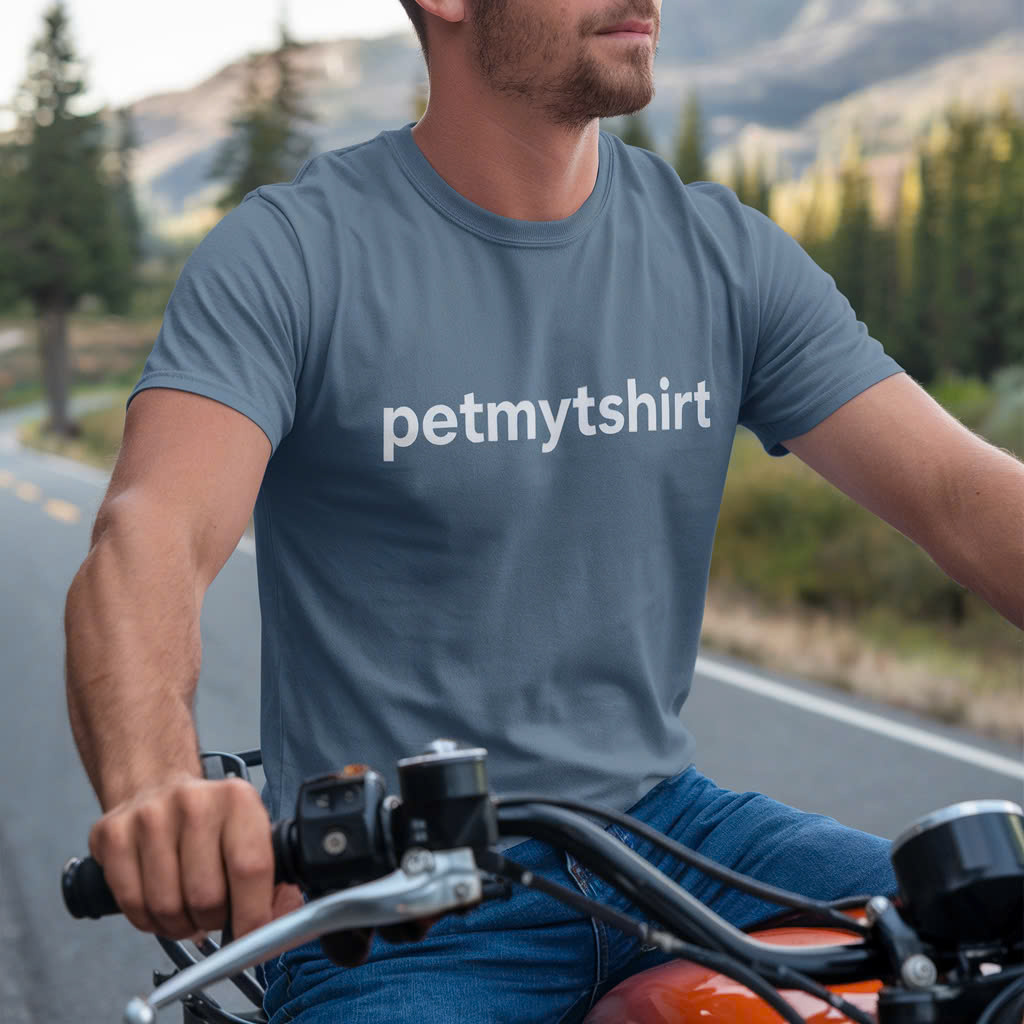
The Timeless Appeal of T-Shirt: A Versatile Piece of Fashion
The t-shirt, a seemingly simple garment, has undergone a remarkable evolution throughout history. Originally designed as an undergarment, the t-shirt has transformed into a global icon of casual style and self-expression. Whether it’s for comfort, convenience, or the desire to showcase personal beliefs and creativity, t-shirts are a staple in nearly everyone’s wardrobe. But how did this basic item become such a powerful force in fashion, and what makes it so universally loved? In this article, we’ll explore the history, design, cultural significance, and reasons behind the t-shirt’s enduring popularity.
A Brief History of the T-Shirt
The origins of the t-shirt trace back to the late 19th century, when it was initially created as an undergarment. Before the t-shirt, men wore heavy, full-length union suits, which were uncomfortable and impractical for hot weather. The t-shirt emerged as a solution to this problem. Its simple, short-sleeved design made it more breathable and comfortable, especially during summer months. It wasn’t until the early 20th century that the t-shirt became popular as an outer garment.
One of the earliest references to the modern t-shirt came from the U.S. Navy in the 1910s. Sailors began wearing the white, short-sleeved garment as part of their standard uniforms. The practicality and comfort of the t-shirt made it a perfect choice for military personnel, and over time, it spread to civilians. By the 1930s, the t-shirt had become a popular workwear item for men in the U.S. because of its lightweight nature and ease of movement.
In the post-World War II era, the t-shirt saw its first mainstream moment. With the rise of mass production and advertising, the t-shirt became more widely available to the general public. In this time, t-shirts began to appear not only in military uniforms but also in Hollywood films, further cementing their status in popular culture.
The T-Shirt as a Symbol of Self-Expression
The t-shirt’s cultural impact truly began in the 1950s, thanks in large part to Hollywood. Iconic figures like Marlon Brando and James Dean wore t-shirts in their movies, cementing their association with youthful rebellion. Marlon Brando’s portrayal of Stanley Kowalski in A Streetcar Named Desire (1951) showcased him wearing a fitted white t-shirt, marking it as a symbol of masculinity and non-conformity. Similarly, James Dean’s role in Rebel Without a Cause (1955) further solidified the t-shirt’s association with rebellious youth culture.
As the 1960s and 1970s rolled around, the t-shirt became a blank canvas for political, social, and artistic expression. Counterculture movements like the hippie movement and the rise of rock ‘n’ roll made the t-shirt a tool for showcasing individuality and dissent. Artists, musicians, and activists began printing slogans, band logos, and political messages on their t-shirts. This era saw the rise of iconic graphic tees featuring bold designs, psychedelic art, and protest messages. The t-shirt had officially become a medium of communication and a reflection of personal beliefs.
With the rise of political activism in the 1960s, t-shirts began to feature protest slogans, civil rights messages, and peace symbols. The Vietnam War protests, the civil rights movement, and other social issues became focal points for t-shirt designs. The garment became a simple, yet effective, tool for activists to make their voices heard, and its message was broadcast globally.
T-Shirt Design: Simplicity Meets Creativity
One of the reasons for the t-shirt’s enduring appeal is its simplicity. The basic structure of a t-shirt—short sleeves, a round neck, and a loose-fitting body—creates a versatile base for any design. This minimalist design allows for endless creativity, whether it’s a simple logo, an intricate pattern, or a thought-provoking slogan.
In the 1980s and 1990s, the rise of streetwear culture and the influence of hip-hop and skateboarding subcultures elevated the t-shirt to new heights. Brands like Supreme, Stüssy, and Nike began to design t-shirts not only for function but also for style. The logos and graphics on these tees became status symbols, with streetwear brands achieving cult followings due to their exclusivity and cultural relevance. High-fashion designers also started to embrace the t-shirt, incorporating it into luxury collections and collaborations with artists. This convergence of high fashion and streetwear marked the t-shirt as a symbol of both accessibility and prestige.
Today, the t-shirt remains a blank canvas for creativity. Whether it’s a vintage band tee, a minimalist design, or a custom-printed shirt, t-shirts allow wearers to express their personality, tastes, and values. With the advent of online printing services, creating custom t-shirts has never been easier, making the garment a more personal and customizable item than ever before.
The T-Shirt in Popular Culture
T-shirts have also played a significant role in popular culture, serving as a visual shorthand for specific eras, movements, and trends. For example, the rise of the graphic tee in the 1980s coincided with the emergence of iconic music festivals, such as Live Aid and Woodstock. Music fans began to wear t-shirts featuring their favorite bands, turning these garments into walking advertisements for their musical tastes. The same trend extended to movies, TV shows, and sports teams, with fans proudly donning t-shirts featuring their favorite stars, characters, and teams.
In the 2000s, celebrity culture and reality TV shows further fueled the demand for statement t-shirts. Celebrities and influencers began wearing t-shirts with witty slogans, self-referential humor, and iconic logos. The t-shirt became a way for individuals to identify with their favorite pop culture figures, whether through band merch, branded clothing, or collaborations with high-profile designers.
T-shirts have also remained a means of engaging with social movements. The Black Lives Matter movement, for example, saw an outpouring of t-shirt designs that carried slogans like “I Can’t Breathe” and “Black Lives Matter,” allowing individuals to show their solidarity with these causes. Such designs amplified the movement’s messages and made them more accessible to the masses.
The t-shirt’s role in popular culture isn’t limited to music and entertainment, however. Over the years, the t-shirt has also been used to raise awareness for social causes. From campaigns supporting environmental sustainability to movements advocating for social justice, t-shirts have become an effective tool for spreading messages of change. With their broad reach and relatively low cost, t-shirts have proven to be an accessible and impactful way to support a cause and amplify voices in society.
Sustainability and Ethical Practices in the T-Shirt Industry
As the fashion industry has become more conscious of its environmental impact, the t-shirt has evolved to reflect these concerns. The production of t-shirts has historically contributed to issues like overconsumption, textile waste, and poor labor conditions. However, in recent years, many brands have begun to prioritize sustainability and ethical manufacturing practices.
Organic cotton, recycled polyester, and other eco-friendly materials are now commonly used in t-shirt production. These fabrics reduce the environmental footprint of t-shirt manufacturing by minimizing the use of harmful chemicals and conserving water. Furthermore, many brands are opting for fair-trade certified production processes, ensuring that workers are paid fairly and work in safe conditions.
Consumers are also becoming more aware of the environmental impact of fast fashion and are seeking out brands that prioritize sustainability. As a result, the demand for ethically produced t-shirts has risen, with companies focusing on transparency and responsible sourcing. This shift towards sustainable fashion has given the t-shirt industry an opportunity to innovate and create products that are both stylish and environmentally friendly.
The increase in popularity of vintage and second-hand clothing has also contributed to the sustainability of t-shirt production. Thrift stores, online resale platforms, and upcycling initiatives have made it possible for people to give old t-shirts a second life. This not only reduces waste but also makes unique, one-of-a-kind designs more accessible.
The Role of Technology in the Future of T-Shirts
Looking ahead, the future of the t-shirt seems brighter than ever. With the rise of digital printing technologies, t-shirts can be created faster and with more intricate designs than ever before. Customization will continue to be a key driver of growth in the t-shirt market, as consumers increasingly seek out personalized and unique designs.
Technology is also changing how we experience t-shirts. Augmented reality (AR) and virtual reality (VR) are expected to play a role in the future of fashion, and t-shirts are no exception. Imagine being able to scan a printed design with your phone and unlock a video, animation, or interactive content related to the shirt. This type of immersive experience could revolutionize the way we think about graphic design and fashion.
Moreover, the ongoing trend of wearable technology could bring about innovative t-shirt designs that integrate smart features. From shirts with built-in sensors that track health metrics to garments that change color based on the wearer’s mood or environment, the possibilities for t-shirt innovation are endless.
Conclusion: The Timelessness of the T-Shirt
The t-shirt is a garment that transcends trends and time periods. It has evolved from a functional undergarment into a powerful symbol of self-expression, individuality, and cultural identity. Whether through the simple elegance of a plain tee, the boldness of a graphic design, or the meaningfulness of a social message, the t-shirt continues to play an important role in our wardrobes and in shaping fashion as we know it.
The enduring popularity of the t-shirt is a testament to its versatility, accessibility, and ability to reflect the ever-changing cultural landscape. As we move forward, the t-shirt will likely continue to adapt and innovate, while remaining firmly rooted in its status as a timeless, essential piece of fashion.
